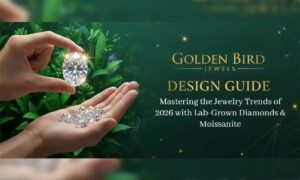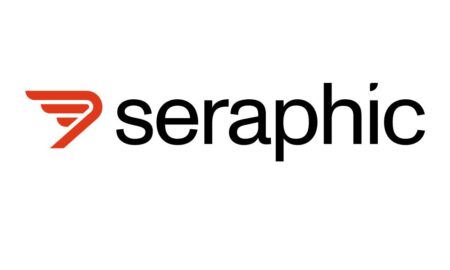Wedding traditions are evolving, and nowhere is this more evident than in the choices couples make for their rings. Gone are the days when wedding bands meant simple gold or platinum circles that looked nearly identical from one couple to the next. Today’s couples are embracing unconventional designs that reflect their personalities, from bold geometric patterns to unexpected materials and finishes. This shift toward individuality has sparked creativity in jewelry design, with artisans crafting pieces that challenge traditional aesthetics while maintaining timeless appeal.
Perhaps the most intriguing development in this transformation is the rising popularity of men’s engagement rings. What was once considered exclusively a women’s tradition has become a symbol of equality and shared commitment. Men are now receiving engagement rings as tokens of their partner’s devotion, breaking down outdated gender norms and creating new rituals that feel authentic to modern relationships. Whether you’re seeking a daring statement piece or a subtle departure from convention, understanding these emerging trends can help you find wedding bands that truly represent your unique love story.
Understanding Engagement Rings
The engagement ring tradition has long centered on a single narrative: a diamond solitaire presented to a woman as a promise of marriage. This convention, popularized in the mid-20th century, established specific expectations about what an engagement ring should look like and who should wear one. Traditional engagement rings typically featured precious metals like gold or platinum, with diamonds taking center stage as the gemstone of choice. The focus remained on size, clarity, and cut, with little room for personal expression beyond these standardized criteria.
Modern couples are rewriting these rules entirely. Today’s engagement rings span an incredible spectrum of styles, from vintage-inspired designs with colored gemstones to minimalist bands that barely distinguish themselves from wedding rings. Some couples choose matching engagement rings for both partners, while others skip the engagement ring altogether and invest in distinctive wedding bands instead. Alternative stones like sapphires, emeralds, and even lab-grown diamonds have gained acceptance as centerpieces. This shift reflects a broader cultural change where personal meaning trumps tradition, and the ring’s significance comes from what it represents to the couple rather than its adherence to conventional standards. The engagement ring has transformed from a prescribed symbol into a canvas for authentic self-expression.
Unconventional Wedding Bands
The wedding band landscape has transformed dramatically as couples seek pieces that break away from traditional smooth, polished circles. Unconventional designs now dominate jewelry showcases, featuring bold geometric patterns, asymmetrical shapes, and architectural elements that make strong visual statements. Some bands incorporate intricate engravings inspired by nature, ancient symbols, or personal motifs that hold special meaning for the couple. Others experiment with mixed metals, combining rose gold with platinum or weaving together contrasting colors for a striking effect. These daring choices reflect a desire to wear something that sparks conversation and stands apart from conventional jewelry.
Texture has become a defining characteristic of unconventional bands, with hammered finishes, wood grain patterns, and even meteorite inlays gaining popularity among adventurous couples. Black ceramic and tungsten carbide offer industrial aesthetics that appeal to those seeking contemporary edge, while Damascus steel provides swirling patterns that make each ring genuinely one-of-a-kind. Some designers incorporate negative space into their creations, with cutouts and open frameworks that challenge the traditional solid band concept. The beauty of these unconventional choices lies in their ability to tell a story—whether that’s a shared passion for minimalist design, a love of nature reflected in organic textures, or simply the courage to choose something that feels authentically personal rather than predictably safe.
Matte Finishes and Unique Textures
The glossy, mirror-like shine that once defined wedding bands has given way to a fascination with matte finishes and tactile surfaces. Brushed metal creates subtle linear patterns that catch light differently than polished surfaces, offering understated elegance that doesn’t demand attention but rewards closer inspection. Sandblasted finishes provide an even softer appearance, with a velvety texture that feels distinctly modern and sophisticated. These matte treatments appeal to couples who find traditional shine too flashy or formal, preferring instead a refined aesthetic that integrates seamlessly into everyday life. The practical advantage becomes apparent quickly—matte surfaces hide scratches and wear far better than polished metals, maintaining their appearance through years of daily wear without requiring constant maintenance.
Beyond simple matte treatments, artisans are pushing texture into experimental territory. Florentine finishes create crosshatch patterns through careful hand-engraving, resulting in a surface that sparkles subtly without the high polish of traditional bands. Stone finishes mimic natural rock surfaces, bringing organic irregularity to precious metals in ways that feel both ancient and contemporary. Some designers incorporate leather inlays, carbon fiber strips, or even concrete elements, expanding the definition of what materials belong in fine jewelry. Oxidized metals offer dramatic contrast, with darkened recesses highlighting raised designs and creating depth that flat surfaces cannot achieve. Wood inlays bring warmth and natural variation, with each grain pattern making the ring unrepeatable.
The appeal of these textured approaches extends beyond aesthetics into personal connection. A hammered surface might remind a couple of their love for handcrafted objects, while a wood inlay could reference a meaningful location where they shared important moments. These textures invite touch, creating a sensory experience that smooth bands cannot replicate. The choice becomes deeply personal—selecting a finish that resonates with how you want to experience wearing your ring every day, whether that means the soft whisper of brushed metal or the bold statement of contrasting textures that challenge jewelry conventions.
Men’s Engagement Rings: A Growing Trend
The concept of men’s engagement rings represents one of the most significant shifts in wedding jewelry traditions. Historically absent from Western engagement customs, these rings are now embraced by couples seeking to symbolize mutual commitment from the moment of proposal. The practice, sometimes called a “mangagement ring,” challenges the one-sided tradition where only women displayed their engaged status through jewelry. Men’s engagement rings vary widely in style—some mirror traditional women’s designs with gemstones and precious metals, while others lean toward understated bands that resemble wedding rings but carry engagement significance. This trend reflects evolving relationship dynamics where both partners want tangible symbols of their promise.
What makes men’s engagement rings particularly compelling is their flexibility in design and meaning. Some couples choose matching sets that create visual unity, while others select complementary styles that honor individual preferences. Men gravitating toward engagement rings often prefer designs with personal significance—incorporating birthstones, engravings of coordinates from meaningful locations, or materials connected to shared interests. The choice to wear an engagement ring becomes a statement about equality in the relationship, rejecting outdated notions that only one partner should publicly demonstrate commitment. As this trend continues gaining momentum, jewelers are expanding their offerings specifically for men, creating pieces that balance masculine aesthetics with the symbolic weight traditionally reserved for women’s engagement jewelry.
Tips for Choosing Your Wedding Band
Start by considering your lifestyle and daily activities when selecting a wedding band. If you work with your hands, engage in sports, or frequently use tools, prioritize durability through materials like tungsten, titanium, or platinum that resist scratching and maintain their appearance. Those in office environments or less physically demanding roles have greater flexibility to explore softer metals like gold or bands with delicate details. Think about how the ring will feel during everyday tasks—a wider band makes a bolder statement but may take longer to adjust to, while slimmer profiles often feel less noticeable. Consider whether you want your wedding band to complement or contrast with an engagement ring, ensuring the metals and styles work harmoniously if worn together.
Explore your aesthetic preferences by trying on diverse styles rather than limiting yourself to preconceived notions. Visit jewelers with an open mind, sampling matte and polished finishes, various widths, and different metal colors to discover what genuinely resonates. Pay attention to your immediate reactions—the right ring often feels correct the moment you see it on your hand. Don’t rush this process; many couples visit multiple jewelers over several weeks, allowing their preferences to crystallize naturally. Photograph rings you’re considering to review later, as designs can blur together after viewing many options. Companies like Saga Bands have made this exploration easier by offering collections that showcase both traditional and unconventional designs, allowing couples to compare different styles and finishes in one place.
Budget realistically by researching material costs and understanding that unconventional designs sometimes carry premium pricing due to specialized craftsmanship. Decide early whether customization matters to you, as bespoke rings require additional time and investment but deliver unmatched personalization. Consider long-term value beyond initial cost—a well-crafted ring in durable materials may cost more upfront but eliminates replacement expenses. Finally, ensure proper sizing by getting measured professionally at different times of day, as fingers fluctuate slightly. Order your ring with enough lead time for potential resizing, and ask about warranty coverage for future adjustments as your needs evolve over the years.
Choosing Rings That Reflect Your Unique Commitment
The journey to finding your perfect wedding band has never offered more possibilities. From unconventional geometric designs and textured finishes to the emerging tradition of men’s engagement rings, today’s couples can choose jewelry that genuinely reflects their relationship rather than conforming to outdated expectations. Whether you’re drawn to the understated elegance of matte brushed metal, the bold statement of mixed materials, or the symbolic equality of matching engagement rings, your choices communicate something authentic about who you are as a couple. The most meaningful wedding bands are those that resonate with your personal story—rings you’ll be proud to wear daily, not because they follow tradition, but because they represent your unique commitment. As you explore these options, trust your instincts and prioritize what feels right for your relationship. The perfect wedding band isn’t defined by what’s conventional or trendy, but by how it makes you feel when you see it on your hand, knowing it symbolizes the partnership you’re building together.































